Award, May 1, 2007 – February 10, 2011 • Advisory board, National Academies.
Search
Memristor Simulator Aids Synthesis of Efficient Devices
News Article, May 1, 2016 • Denis Mamaluy (1425) and Xujiao (Suzey) Gao (1355) Memristors are variable resistors that can be adjusted, reversibly, by applied current. They are one of the strongest candidates to replace flash memory, and possibly DRAM and SRAM in the nearest future. Memristors also have a high potential as a beyond-CMOS technology...
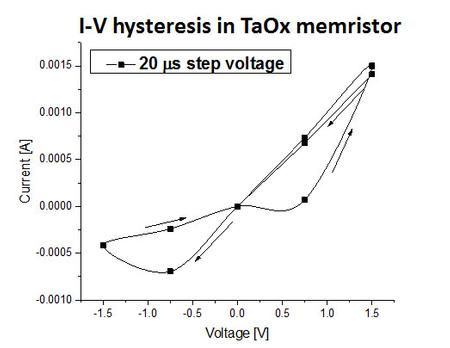
Mesquite
Project • MESQUITE is a linkable software library that applies a variety of node-movement algorithms to improve the quality and/or adapt a given mesh. Mesquite uses advanced smoothing and optimization to: Untangle meshes,Provide local size control,Improve angles, orthogonality, and skew,Increase minimum edge-lengths for increased time-steps,Improve mesh smoothness,Perform anisotropic smoothing,Improve surface meshes, adapt...
Michael Bynum
Staff Page • Discrete Math & Optimization. Biography Michael Bynum is a Senior R&D Member of Technical Staff in the Discrete Math & Optimization Department at Sandia National Laboratories. His main area of expertise is computational optimization with emphasis in parallel algorithms and mixed-integer nonlinear programming. Education Michael has a B.S. from Texas...
Michael Krygier
Staff Page • Senior Member of Technical Staff. Biography Michael C. Krygier earned his Ph.D. in Physics from the Georgia Institute of Technology, where his research centered on computational fluid dynamics. His work specifically addressed the turbulence problem through the lens of dynamical systems, leading to the development of a nonlinear optimization software...
Michael S. Eldred
Staff Page • Optimization & Uncertainty Quantification. Biography Mike led the DAKOTA project for 15 years (1994-2009) and now leads algorithm research activities that target new capabilities for DAKOTA. Mike's research interests include uncertainty quantification, design under uncertainty, multifidelity modeling, surrogate-based optimization, and high-performance computing, with application to stockpile stewardship and energy initiatives through NNSA and...

Michael Wolf
Staff Page • Scalable Algorithms. See my expanded staff site.

Mike Heroux Receives Outstanding Service Award
News Article, June 9, 2023 • CCR researcher Mike Heroux was recently awarded the 2023 Outstanding Service and Contribution Award from the IEEE Computer Society Technical Committee on Parallel Processing. Heroux was recognized “For outstanding service to the high-performance computing community, and significant contributions to the performance and sustainability of scientific software.” The award is given...
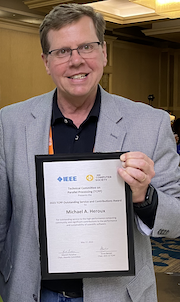
Mimetic Discrete Models with Weak Material Laws, or Least Squares Methods Revisited
Award, October 7, 2011 • Invited Talk, The Thirty-sixth Woudschoten Conference, Netherlands.
Mimetic discretizations and what they can do for you
Award, October 5, 2011 • Invited Talk, The Thirty-sixth Woudschoten Conference, Netherlands.
Mini-Applications
Focus Area • Application performance is determined by a combination of many choices: hardware, runtime environment, languages and compilers used, algorithm choice and implementation, and more. In this complicated environment, we find that the use of mini-applications, small self-contained proxies for real applications is an excellent approach for rapidly exploring the parameter space...
Mini-symposium on ice sheet modeling
News Article, June 1, 2017 • At the SIAM CSE conference, a two part mini-symposium on Ice Sheet Modeling was organized by Sandians Luca Bertagna, Mauro Perego (1442) and Irina Tezaur (8759) along with Daniel Martin from LBNL. The mini-symposium focused on theoretical and computational advancements in ice sheet modeling, addressing many of the mathematical and...
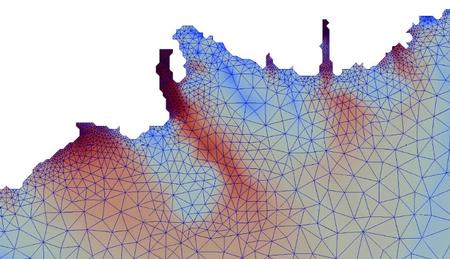
Minisymposium Organizer
Award, October 16, 2011 – February 17, 2012 • Society/professional leadership, SIAM Conference on Parallel Processing for Scientific Computing.
Molecular Dynamics
Focus Area • We develop and use molecular dynamics and related simulation methodologies, especially those encompassed in our LAMMPS (Large-scale Atomic/Molecular Massively Parallel Simulator) molecular simulation package (https://www.lammps.org). LAMMPS is a freely available, widely used software package that runs in serial or on high performance computing platforms, and includes potentials for sold-state materials,...
Monotone, Bound Preserving Transport and Remap
Award, February 27, 2011 • Invited Talk, 2011 SIAM CS/E Conference.
Motivating Applications and Software
Research Area • Technologies developed by the CCR are closely aligned to Sandia's broader set of mission strategies. These technologies have applications in numerous areas including, but not limited to, nuclear weapons, cyber security, climate modeling, alternative energy, and improvements to the power grid.

Multi-threaded MPI Remote Memory Mini-applications at Scale
News Article, July 1, 2016 • ACES researchers have used mini-applications utilizing next generation communication techniques, remote memory access with multi-threading, the only RMA-MT mini-applications currently available and demonstrated their performance at full scale on Trinity. Initial results are promising and are scaling well. Improvements have been made to Open MPI in response to these mini-applications...
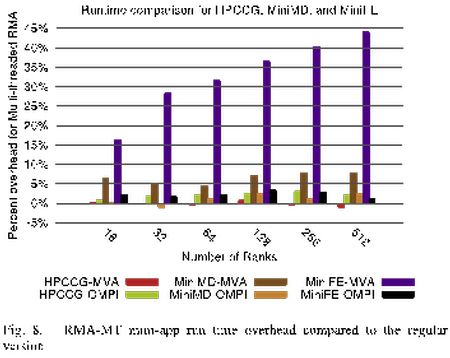
Multiphysics Simulation Technologies
Focus Area • Multiphysics Simulation Technologies develops advanced or novel simulation methods and application software designed for use on high-performance computing platforms to solve currently intractable problems of national importance. Current strategic thrusts include development and application of peridynamics and gradient-free methods for material failure, fracture, and fragmentation and development of new integrated...
National Advisory Board for the Applied and Computational Mathematics Emphasis
Award, October 2, 2013 • Advisory board, Brigham Young University Mathematics Department. https://acme.byu.edu
National Research Council of the National Academies study on Making the Soldier Decisive on the Future Battlefield
Award, January 1, 2011 • Society/professional leadership, Professional Society.
Neural Exploration & Research Lab (NERL)
Project • The SNL NERL facility enables researchers to explore the boundaries of neural computation. The research conducted in the lab evaluates what is possible with neural hardware and software for national security benefit and the advancement of basic research. Current areas of NERL research include: Machine Learning and Deep Learning Microelectronics...
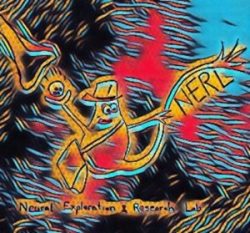
New ARIA Linear Solver for Coupled Multiphysics Flows
News Article, October 1, 2016 • A new multigrid linear solver has been developed and deployed for ARIA, a finite element analysis code for the solution of coupled multiphysics problems. The new linear solver specifically addresses challenges associated with PDE simulations where the number of degrees-of-freedom at each mesh node varies. This scenario frequently arises within...

New Exascale Interconnect Based on Sandia Technology
News Article, September 1, 2015 • French Supercomputer vendor Atos, formerly Bull, recently announced plans to develop a new interconnect for exascale computing systems based on Sandia’s Portals 4 network programming interface. A keynote talk at the recent IEEE Symposium on High-Performance Interconnects entitled “The BXI Interconnect Architecture” detailed the design of the network interface and...
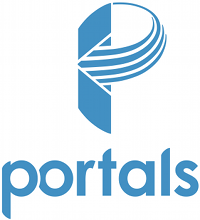
New Experimental Results in Communication-Aware Processor Allocation for Supercomputers
Award, May 12, 2008 – May 16, 2008 • Invited Talk, New Challenges in Scheduling Theory.
New Umbrella CRADA with Caterpillar Approved
News Article, October 1, 2012 • A new Umbrella CRADA with Caterpillar Inc. has been formally approved. This collaboration will bring together Sandia’s broad, advanced simulation technology for addressing Caterpillar’s multi-faceted design, analysis, and decision-making challenges. In turn, the development and integration of Sandia’s foundational technologies across these areas will be greatly accelerated. Moreover, the collaboration...
Results 276–300 of 486